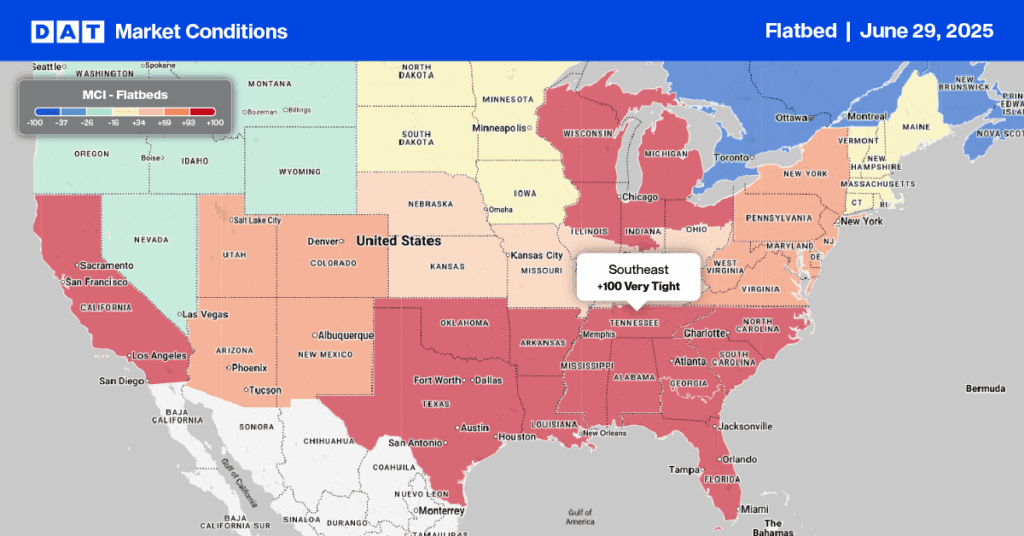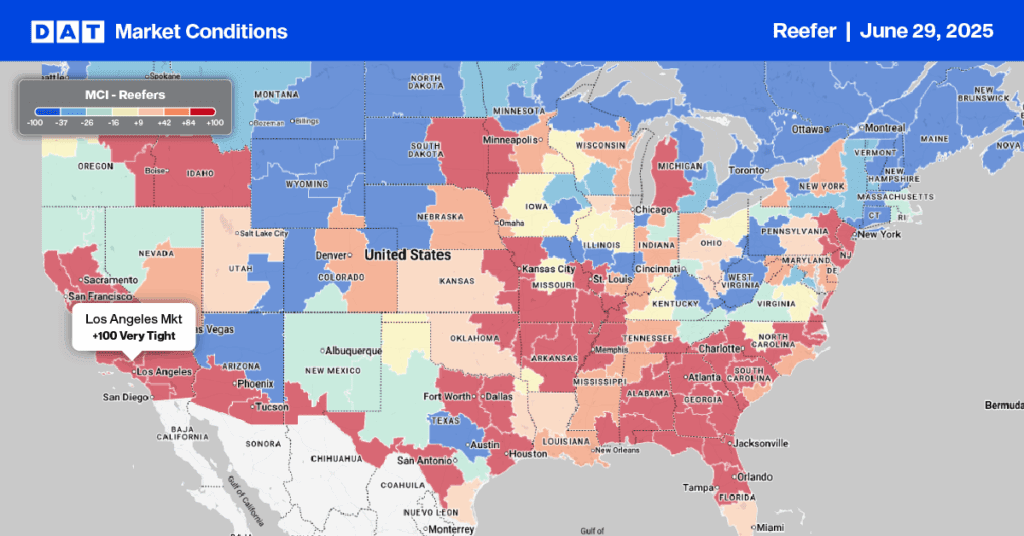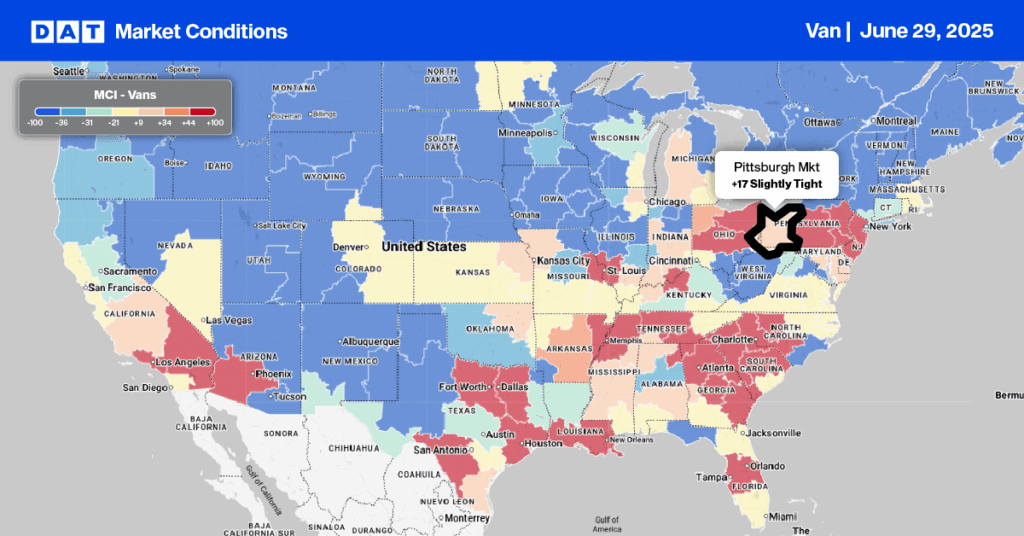On a recent DAT Freight & Analytics show, we interviewed Zac Rogers, Associate Professor, and discussed the latest results of the Logistics Managers Index. Here’s an excerpt from the interview.
Ken Adamo (KA): It’s looking like we might be in for a bit of a slower year than expected. What are you seeing?
Zac Rogers (ZR): It looks very similar to 2019 because of the difference in upstream and downstream dynamics. We heard all this noise from retailers at the end of December, indicating they’d sold off their inventory and started to build back up. And for places like Walmart, Target, and Nike, that was true. Consumer spending went up by a point or two in the last month, but we’re not seeing a lot of spending on the industrial side. So you know, anything tied to something with an interest rate seems to be struggling a little bit, like if you look at inventories of appliances, for instance, people aren’t going to buy new appliances if we’re not building new houses. And we won’t buy many new houses when the interest rates are so high. And so this is similar to what we saw in our numbers in 2019.
Dean Croke (DC): For our new listeners, can you explain the difference between upstream and downstream warehouses from a truckload delivery perspective?
ZR: So for upstream, this is your sort of traditional big distribution centers out in a rural area like Walmart’s grocery distribution centers in Cheyenne, Wyoming, right at the crossroads of two major interstates, fairly rural areas where things are not that expensive.
Downstream warehousing would be like the giant Amazon distribution center five miles down the road in an urban area. Here they are designed for quick distribution to retail stores that are all fighting over that same urban infill space. Maybe something that was an old Kmart store looking to be converted to a final-mile delivery warehouse as close to consumers as possible. So Downstream tends to be the things that are directly consumer-facing, whereas Upstream tends to be anywhere further up the supply chain distribution focused on B2B shipments at the pallet level.
DC: From January to February, your prior report said the transportation capacity grew at the fastest pace on record. Has the rate of increase in capacity slowed down at all?
ZR: In March, yes. The rate of increase for transportation capacity has been up in the 60s and 70s for about the last year, and that comes after transportation capacity contracted from April 2020 all the way until April 2022. So we had two straight years of contraction (tightening capacity) until May 2022, when capacity started to loosen.
KA: What’s your outlook for the balance of the year a quarter of the way into the year?
ZR: I think this would be similar to 2019, but it doesn’t seem like we’re getting a full-on recession. The overall economy continues to be somewhat mixed. Things are slower than they have been, but it does not seem we are in an official recession. The U.S. economy grew at a pace of 2.6% in Q4 2022, which is slightly lower than what was expected partially because seasonally adjusted consumer spending grew by 0.2% in February, down significantly from the 2% growth observed in January. The LMI’s overall index score of 51.1 (-3.6) epitomizes these mixed economic messages. This is the slowest rate of growth we have ever tracked in the 6.5 years of the index, but it is still growing. Things have clearly been slowing down, but the macro economy has not yet come to a halt.
The full interview can be found here on the live DAT Freight & Analytics weekly show.


